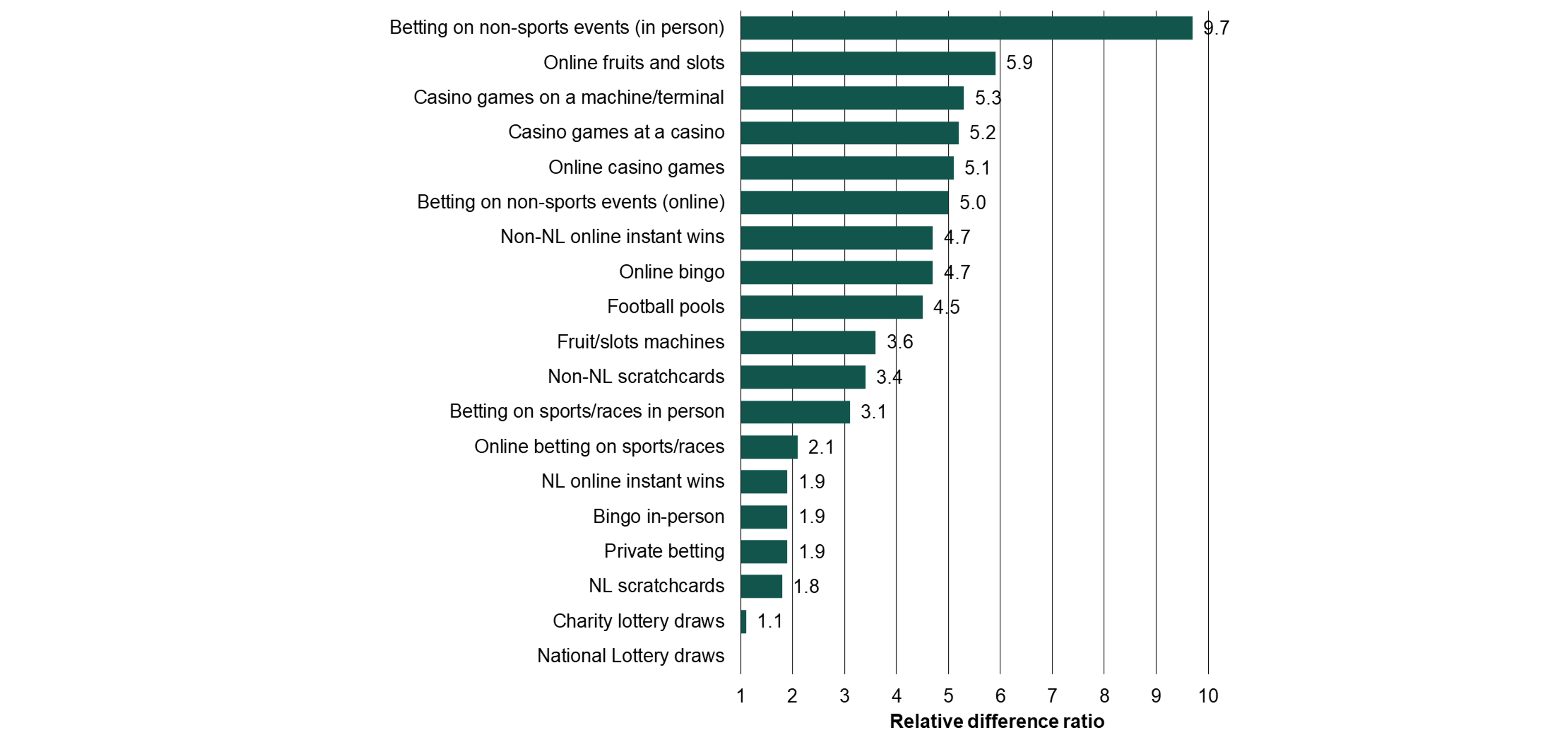The 6 February-dated report, another specialist deep-dive into results from the Gambling Survey for Great Britain (GSGB), sought to explore the relationship between gambling activities and Problem Gambling Severity Index (PGSI) scores.
In its initial release of GSGB data in July 2024, the GC noted in-person betting on “non-sports events” represented the vertical with the highest average proportion of high-risk players (PGSI score of eight or higher).
It outlined the relative difference between verticals in terms of how players typically scored on the PGSI. This presented a number of verticals which could be considered higher-risk.

The Problem Gambling Severity Index (PGSI) method scores participants on their gambling behaviours. A score of eight or higher indicates a person has experienced “adverse consequences” due to gambling.
The Gambling Commission said that although this research was informative, it did not consider how a range of other factors could influence the link between different gambling activities and PGSI score.
The latest report therefore looked at the relationship between a player’s involvement in multiple gambling activities and any problematic behaviours they have shown. As well as how frequently they gambled and whether that impacted their PGSI.
Many forms of gambling were tested such as casino products, both land-based and online, as well as sports betting and online instant wins and scratch cards.
In its second research model, the Gambling Commission considered whether problematic behaviour while playing a specific vertical persists even after considering a person’s broader gambling involvement.
Its third model looked at a player’s age, sex, education level, employment status, household income quintile, area deprivation, marital status and ethnicity, all of which have been previously identified as being associated with PGSI scores.
What do the results look like?
Across all verticals, model one and two brought down the average ratio of players scoring a PGSI of eight or above, however the Gambling Commission considers some verticals were still closely associated with problem gambling.
It found when buying National Lottery tickets (both online and in-person), the odds ratio of a PGSI score of eight or more was significantly lower among those that purchased these in the past 12 months than those who did not.
However, participation in activities such as online slot games and non-sports betting were still found to be “significantly associated” with PGSI scores of eight or more, even after gambling frequency was considered.
Other games closely associated with problem gambling after taking into account all the new variables were online instant wins, sports betting and casino games, both in-person and online.
The Gambling Commission report found that these activities are “all significantly associated with PGSI scores of eight or more when broader gambling involvement and demographic and socio-economic status were taken into account.”
Engaging with these gambling formats showed a “potential increased risk of adverse consequences” for users.
“Notably, many of the gambling activities most closely associated with a PGSI score of 8 or more represent those which are faster, continuous gambling formats (casino, slots, online instant wins),” the GC said in its report.
“However, the results also highlighted betting on non-sports events and betting on sports/races in person as being significantly associated with a PGSI score of eight or more. It is less clear what is driving these associations.”
Gambling activities that showed less association with higher PGSI scores were football pools, in-person bingo, sports betting and national lottery online instant win games.
Evidence supports regulation
In conducting the Gambling Commission study, researchers provided participants with a list of 18 forms of gambling activities legally available in the UK. Subjects were also asked about any private gambling activities they had recently taken part in.
The study set out to test if the previous conclusion that “greater gambling involvement better characterises disordered gambling than does any specific type of gambling” was valid.
It found that while gambling involvement was an important factor in obtaining high PGSI scores, some activities have elevated risk profiles.
Other studies had previously put forward this finding and suggested that these problem gambling formats require “additional regulatory attention”. The paper notes that its evidence supports this conclusion.
Original article: https://igamingbusiness.com/gaming/gaming-regulation/gambling-commission-study-problem-gambling/














